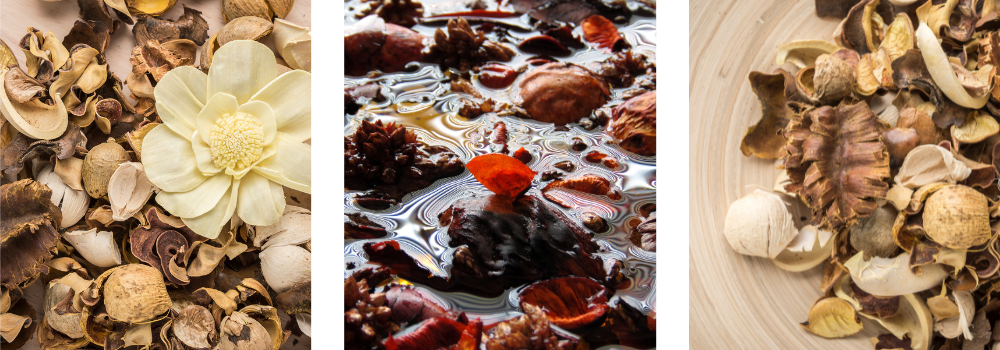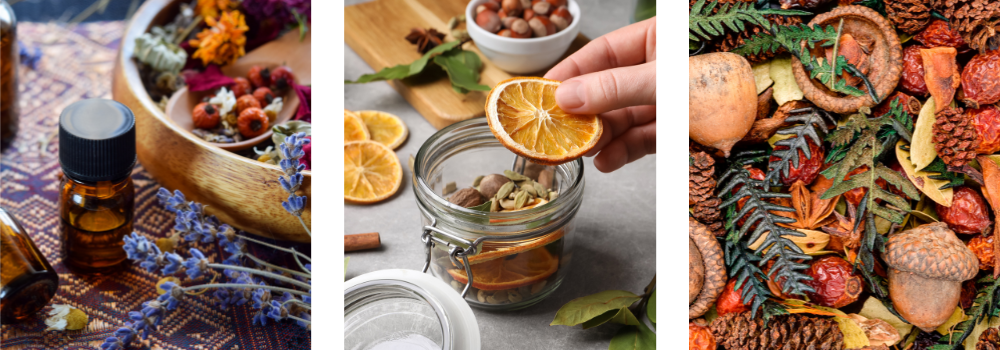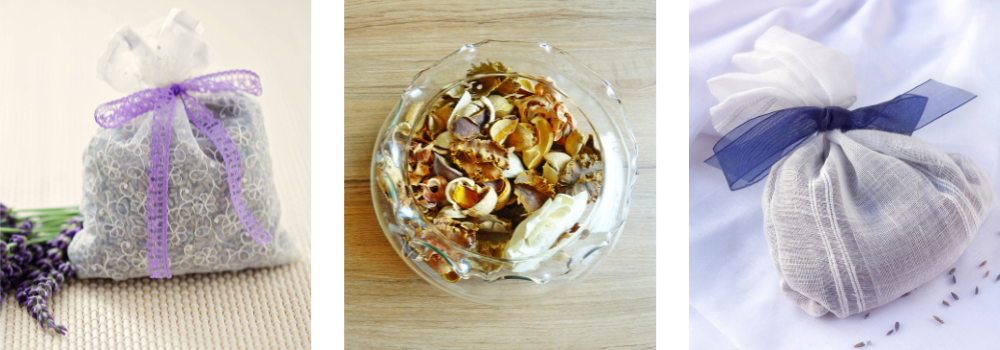Is it time potpourri became cool again?
In a world that is getting faster and more demanding by the day, it is increasingly important to give yourself time to decompress. That is why many people, myself included, are looking to turn their homes into a comfortable, safe haven where we can hit the pause button and get back to what matters to us.
I know what you're thinking! Turning your house into anything sounds like an awful lot of work, not to mention expensive. Luckily for us, there is an easy way to add atmosphere and cosiness to your interior.
I am of course referring to home fragrance! If you've ever read our blog, you'll know that here at OurHands, we're obsessed with home fragrance. From traditional types of incense, to incense paper and scented candles, we love how a delicate whiff of perfume can elevate a room and make it seem more welcoming.
Today, we're going to talk about one of the lesser-known forms of home fragrance: potpourri. Despite its fall from popularity over the recent years, potpourri is a simple, beautiful, and endlessly customisable way to perfume your interior.

Discovering potpourri
Potpourri (which is pronounced poh-pooh-REE), comes from the French ‘pot pourri’, literally meaning ‘rotten pot’. But don’t let the less-than-appealing name fool you! Potpourri is actually a delightful mixture of fragrant ingredients and essential oils that can be placed on tables or at the back of drawers to delicately perfume your interior.
It’s easy to make, sustainable and lasts for months or even years!
A quick history of potpourri
The concept of potpourri is nothing new: people have been trying to make their homes smell nice for about as long as there have been homes! Preserved bundles of dried flowers and herbs have been found in tombs dating all the way back to Ancient Egypt.
The first documented use of the word “potpourri” as we know it today dates from 18th century France. At the time, hygiene standards were extremely poor in most of Europe. Most people washed almost every day with a little soap and water or with a dry cloth, but it was a cursory wash at most. With the addition of open sewers in the streets and the lack of cleanliness, it’s no wonder potpourri got so popular!
Traditionally, potpourris were made from fresh herbs and flowers that were picked over the summer, then mixed with coarse sea salt and left to cure. The mixture might ferment or grow mould over the following months, which is where to term “potpourri” (or “rotting pot”) comes from. Eventually, though, the mixture would dry completely. It would then be mixed with additional spices until the desired fragrance was achieved.

How do you make potpourri?
Making potpourri is a lot easier than it used to be! Nowadays, it is most often made from dried flowers, as well as fixative and a few drops of essential oils.
In order to make potpourri, you’ll need to think about the kind of fragrance you would like, what you would like your potpourri to look like, and what you’ll use it for. This will make it easier to determine the type of potpourri you’ll make, as well as which ingredients you’ll need.
Potpourris can be made from entire flowers, buds, or petals, but also spices, fruit, herbs… The sky’s the limit! Do make sure to carefully pick your ingredients, as mixing too many scents in a potpourri will result in an overwhelmingly fragrant mixture.
First, you’ll want to dry your flowers. There are many ways to dry flowers: silica gel, hanging them upside down, leaving them in the oven... You can experiment with different methods and see what works best for you.
Then, you can add some little decorative elements that will elevate your potpourri. Some sticks of cinnamons, dried orange peels, or even sea shells can make your potpourri look as good as it smells!
Finally, you’ll want to scent your potpourri. While traditionally the smell of a potpourri came from the ingredients used in it, nowadays we tend to prefer stronger home fragrances. It’s a good idea to use a natural fixative, such as orris root powder, to ensure that the scents of your potpourri will last as long as possible. Sift the orris root powder throughout your potpourri, then add a few drops of your favourite essential oils.
If you’d like a more modern look and scent for your potpourri, we recommend blending in some small bits of incense paper!

How to use potpourri
Potpourri can be used in many different ways around the house, both to perfume your interior and, depending on the ingredients used, to keep pests like moths and mosquitoes away. Traditional ways of presenting potpourri include pouring it in a large bowl that can be placed on a table to serve as a centrepiece, or dividing it into small muslin bags to be put inside drawers and cupboards.
Potpourri also makes a great festive little gift! Simply put your potpourri in a little sheer cotton bag with a nice ribbon and a note, and they’ll think of you any time they smell it!
Homemade potpourri generally lasts for a couple of months. As long as the ingredients are still looking and smelling nice, you can freshen up the fragrance every few weeks with a few drops of essential oils. Once the potpourri starts looking wilted and stops being as fragrant you can simply get rid of it in your compostable bin.

So, is it time for potpourri to become cool again?
We definitely think so! Potpourri is a sustainable and creative way to make your house smell lovely. It is also easy to make with natural ingredients from around the house and lasts for months. It makes a great gift but can also be used as a centrepiece or tucked away inside drawers to bring a touch of tranquillity to any space.
Next time you’re looking for a new DIY project, why not give homemade potpourri a try?

